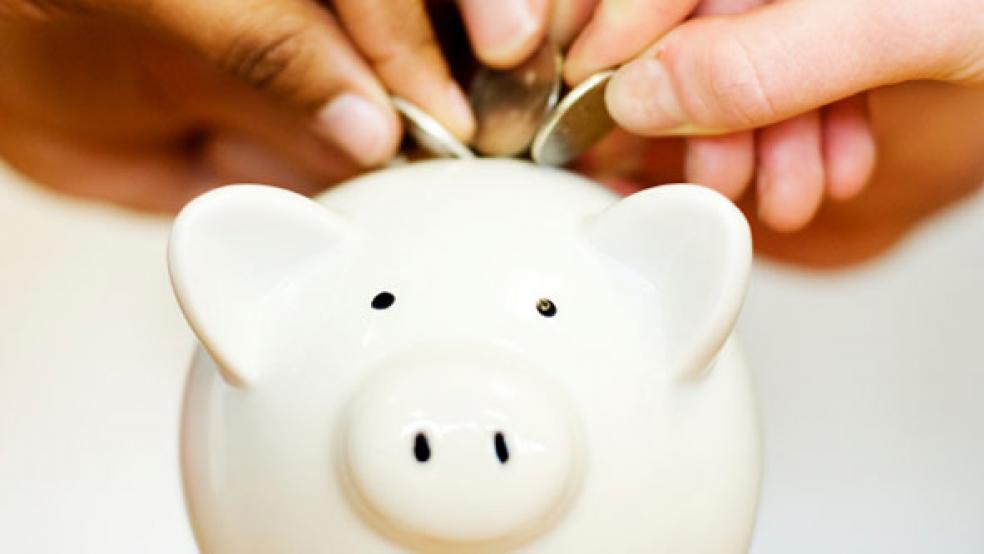Although Americans saw extra money in their paychecks in January from the Social Security tax cut, they are saving, not spending, according to a monthly report from the Bureau of Economic Analysis, which suggests they may be wary about the economy. But there were hints of optimism in other reports.
Before oil prices started to spike, analysts predicted the extra income from the Social Security tax cut would boost economic growth and lead to hiring, but consumer spending cooled in January, up just 0.2 percent compared to the 0.5 percent increase in December, according to the report. The increase is the lowest since last summer, and after accounting for inflation, spending actually dipped 0.1 percent.
Paul Dales, an economist with Capital Economics, said higher gasoline and food prices coupled with the weak job market and an elevated unemployment rate “have already started to dent real consumption ... All the payroll tax cut will do is offset the rise in gasoline and food prices, rather than provide a boost to real spending.” The average price of gas is at a two-and-a-half year high of $3.35 per gallon, according to gasbuddy.com.
The Social Security tax cut boosted Americans’ paychecks by 2 percent, on average an extra $1,000 this year. That amounts to $110 billion overall, and accounts for a 1 percent increase in personal income in January, up from a 0.4 percent rise in December. Disposable income rose by $78.3 billion, or 0.7 percent, up from a 0.4 percent increase in December. The temporary tax cut was the primary driver behind the two increases, not higher salaries and wages.
The tax cut is allotted monthly, not in one lump sum, meaning if a worker makes $5,000 a month, he or she would get an extra $100 per month. Consumers are stashing the extra cash in the bank. The personal savings rate rose to a four-month high of 5.8 percent, up from 5.4 percent in December, well above the 2.1 percent savings rate in 2007, when Americans were spending more freely.
“The savings rate will head higher over the course of the year,” said Mark Vittner, senior economist with Wells Fargo. “Consumers are working to repair their balance sheets from the damage inflicted on them in the recession.”
In January, there was strength in big ticket purchases, especially in the auto industry. Many consumers had put off buying a car due to uncertainty in the labor market. “If you survived the recession, you feel a little better about your prospects,” Vittner said.
Consumer spending accounts for 70 percent of U.S. gross domestic product. On Friday, the Commerce Department revised its estimate of GDP own to 2.8 percent for the fourth quarter, from an earlier estimate of 3.2 percent.
A separate survey by the National Association of Business Economics showed signs of a strengthening recovery, with a majority of members expecting U.S. GDP to grow by 2 to 3 percent in 2011.
"The number of firms expressing positive hiring plans is at a level not seen in over a decade — a sign of improving labor-market dynamics,” said Shawn DuBravac, chief economist at the Consumer Electronics Association, in a statement. “Industry demand continues to move higher, and profit margins are expanding.” The NABE also predicts consumer spending will tick up to 3.2 percent in 2011.
Meanwhile, pending home sales declined 2.8 percent in January, a weaker-than-expected reading, according to the National Association of Realtors. Still, the pace of January existing-home sales, 5.36 million, is higher than NAR’s annual forecast for 2011. If contract activity stays on its present course, there should be an 8 percent increase in total existing-home sales this year, the organizations said.
“The housing market is healing, with sales fluctuating at times, depending on the flow of distressed properties coming on the market,” said Lawrence Yun, chief economist with the National Association of Realtors.
Related Links:
Personal Income, Spending, Savings Rate Increase (CNN Money)
Consumer Spending Cools (Wall Street Journal)
U.S. Consumer Spending Cools as Food, Fuel Costs Rise (Bloomberg)





